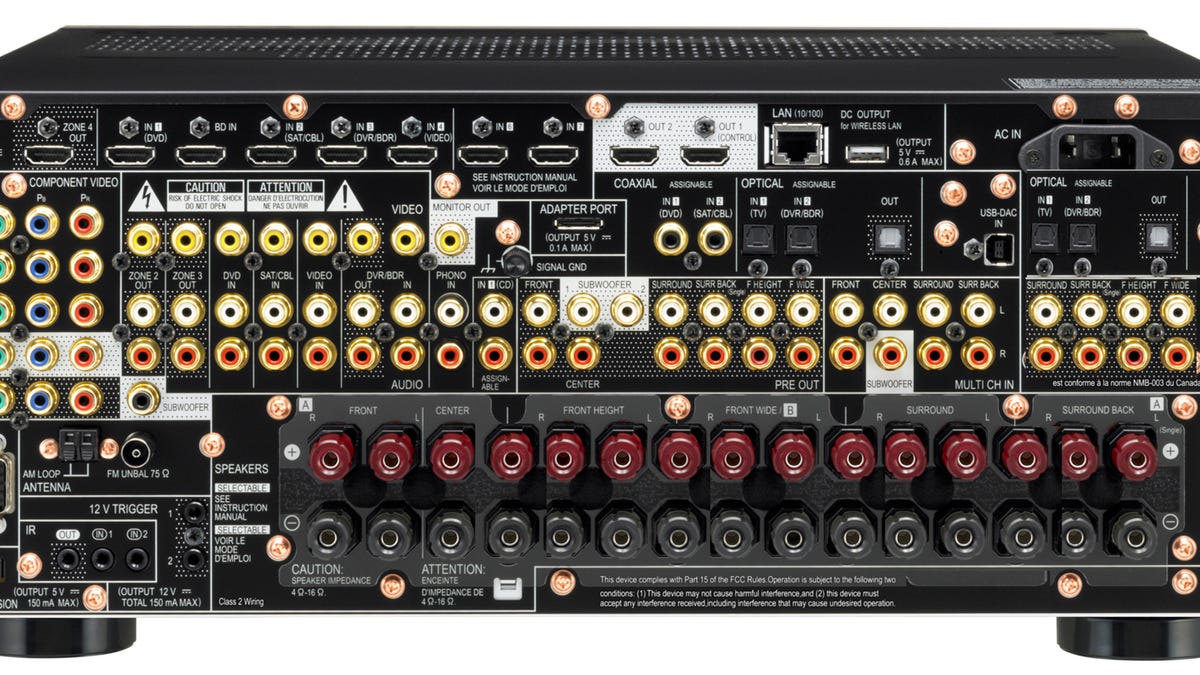Are complicated AV receivers responsible for sound bars' booming popularity?
The Audiophiliac ponders the question: Are AV receivers too bleeping complicated?

A couple of months ago, a record producer friend bought a new AV receiver and it drove him nuts for a couple of days. He went down one setup rabbit hole after another, and he couldn't play music or movies for a few minutes, and then he'd figure it out, but the sound was out of whack. The subwoofer was too loud, then it stopped working. I mention that he's a producer only to note he's used to working with tech, but that receiver was out of his league.
Over the past few years I've occasionally gotten panicked calls from friends with similar woes. This rarely happened 10 years ago, before receivers were loaded up with Wi-Fi, Bluetooth, object-based 11-channel surround sound, room-correction processing, RS232 and IP control, 4K Ultra HD 60Hz video, 4:4:4 Pure Color sub-sampling, High Dynamic Range (HDR), 21:9 video, 3D and BT.2020 pass-through. If you need all that stuff you're in luck -- more and more receivers are fully equipped!
Stereo receivers like this Onkyo TX -8160 are so much easier to use than AV receivers.
On the other hand, I'd love to see a new generation of great-sounding but minimally featured 5.1 channel receivers. Ones that forgo all the features most buyers will never use, and put the money where it counts -- into build and sound quality. My dream AV receiver would have five HDMI inputs, Dolby TrueHD, DTS Master Audio, Class AB (not D) amplifiers, bass and treble controls and one or two subwoofer outputs. That's it.
I doubt my dream receiver will ever be made. Sound quality is so hard to pin down; a lot harder to quantify than the number of HDMI inputs, 4K Ultra HD 60 Hz video, blah, blah, blah. Manufacturers believe that consumers' buying decisions are based mostly on features, whether or not those features will actually be useful to the buyer. Too often sound quality concerns play second fiddle to the latest gizmos.
I think overly complicated receivers have played a role in the ever-increasing popularity of sound bars ; they're proof-positive the market is less and less interested in complicated audio. You can't go too wrong with a sound bar's setup or sound options. Easy does it.
With receivers, the chance of mucking up the sound by inadvertently activating a processor or equalization program are high, and coming back to "flat," totally unprocessed sound is hardly a straightforward task for the average consumer. Heck, sometimes even experts get flummoxed by the sheer density of setup choices in today's receivers. Peruse, for example, the 287-page English-language owner's manual for the Denon AVR-X2300W. Fun reading, it's not. The AVR-X2300W is a midline model, far from the most complicated receiver in the Denon line -- that honor goes to the AVR-X7200WA (that bad boy's English language manual runs to 383 pages! I'm not suggesting manufacturers stop making feature heavy receivers, just that they should offer high-end, sound oriented models as well.
Since no-frills audiophile sound quality AV receivers have yet to be made, consider a stereo receiver like the Onkyo TX-8160. It's vastly easier to use and set up than an AV receiver, and stereo home theaters can serve as a viable, and better-sounding alternative to sound-bar systems
I'd love to hear from folks who recently bought an AV receiver, and how easy or hard it was to set up. Did you use the receiver's auto speaker setup/calibration? Were you satisfied with the results? Could you use the features you wanted? Or was it so much of a hassle you returned the AV receiver and bought a stereo model?
Or did you forgo receivers entirely and buy a sound bar instead, because receivers are too complicated? Share your thoughts in the Comments section.

